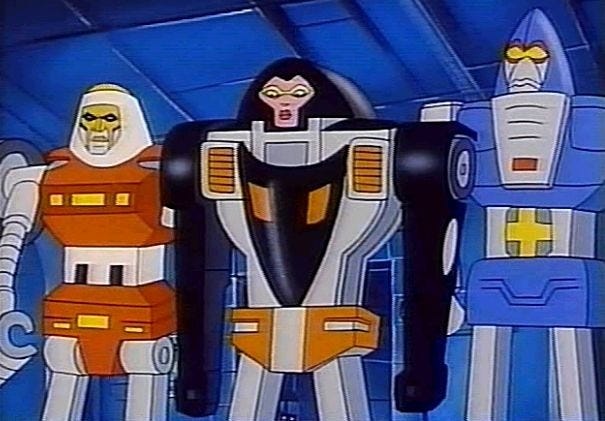Thoughts on Bots – Cody Simms – Medium
What should we expect from a bot ecosystem?

Hot hot hot.
Bots have thoughts on lots and lots.
No dots. Just bots.
Hot / not? Great Scott!
If you talk like Dr Seuss to a bot, can it learn to respond in rhyme? We shall see. Yippee!
The internet is abuzz this week on the bot ecosystem that Facebook is seeking to create around Messenger, and of course Slack has been investing here for some time as well. Personally I found the bot announcements at Facebook’s F8 way less profound than Zuckerberg’s approach to a 10-year roadmap, his images of airplanes that can fly at 60K feet for months at a time and beam internet around the world, and his vision that in an AR-enabled future everything that projects an image today (such as a television) will be just a $1 app in an AR app store. (If you have not watched his F8 keynote, take the 30 minutes to do so. I’m convinced that he’s the living embodiment of Steve Jobs, as no one else comes close to having his scale of impact on culture from a technology-led perspective.)
But…let’s talk about bots today. What should we expect from the coming bot-pocalypse?
Consumer Product Development Paradigm Shift
In the consumer software world, we are seeing a shift in behavior. After 9 years of staring at our phones for hours a day, and a product development world that’s been deeply focused on apps apps apps (Uber, Instagram, and Snapchat have been some of the most successful by-products of this era), we’re finally seeing a shift in product development trends.
Much like US politics, consumer product development seems to be shifting toward the extremes. And the two extremes of the shifting consumer product landscape are No UI and Immersive UI.
The Immersive UI trend is a subject for a long future post and I won’t dwell on it here. It includes VR, AR, and real-time video (interactive and consumptive).
The No UI trend includes voice (see my thoughts on voice as UI) and bots. The No UI trend begins to represent software in its purest form. One could say that it’s about humans talking directly to machines in command line form. But I like to think about it the opposite way. It’s about machines being able to talk to humans directly, and to compute the vagaries and nuances of human expression into command line themselves. To me, this distinction is the biggest difference between the app paradigm where most inputs are relatively structured via forms to fill out and things to swipe left or right on, and a No UI paradigm where the computer has to actually accept input, comprehend and process it, and generate its own output on the fly in a way that feels natural and normal to a human.
So what should we expect this product landscape to look like? I think we’ll see a lot of the same organizing principles that we’ve seen in the last two major computing eras, the dotcom boom (aka Web 1.0) and the mobile explosion of the last ten years, as follows…
Content Platforms
The birth of the Internet, aka the dotcom boom, was roughly twenty-two years ago (for more from me on this see here). People for the first time had access to a global audience for their information or product. And after a swath of hand-built HTML sites begat GeoCities as well as the rise of the “webmaster”, we saw a number of verticalized publishing platforms emerge, which became how people put their stuff on the Internet. Content sites use content management platforms (WordPress, etc), Commerce sites use commerce platforms (Stripe, Magento, etc), and Community sites use community platforms (Drupal, MediaWiki, etc). We will soon see a significant number of roll-your-own-bot publishing platforms — from bot content management to bot ecommerce to bot customer service and more. Init.ai (Techstars ’16) is an example here. All you need is a designated phone number from Twilio or Burner or the like and you can hang your bot shingle. The most verticalized of these roll-your-own-bot platforms will likely win rather than the ones that try to support too many different use cases. As an example, see Well (Techstars ’16) which is focused 100% on solving interactions around Healthcare. Or CarServ (Techstars ‘16), helping you communicate with your mechanic while your car is in the shop. Or Subcurrent (Techstars ’16) which is focused on on polls, surveys, and employee engagement. Verticalization wins in the bot platform space.
Agency Bots
When websites first became a thing, every company needed a website. And in the mobile era, as apps became all the rage, everyone needed an app. But for a long time, very few companies had great app developers. To fill this void, we saw an explosion of mobile app development service businesses and agencies emerge. I suspect that in the bot paradigm, we will similarly see a number of bot companies supporting the big brand move to a messaging and chat interface via bots. These companies will look innovative at first blush as they will be technology startups and will be facilitating big brands as they move to new interaction paradigms. But a large majority of them will end up as tech-enabled agency businesses not as venture-scale platforms. If you are building a bot-based business today in service of brands or clients as your customer, ask yourself how the business you are building can scale via software and self-service client onboarding rather than scaling via sales and account management.
Killer Bots
I’m not talking about Skynet here. Rather, what will good bots actually be good at? Where will they make life better? Let’s look to past paradigms for a clue. If you look at the iTunes top 20 free mobile apps on any given day, usually around half of them are simply mobile extensions of multi-platform services (Spotify, Google Maps, Facebook, YouTube, etc). For these apps, mobile is a delivery channel rather than the defining characteristic of the business. And of the remaining other half of apps in the top 20, a good chunk of them are games. Indeed, games are the killer app on mobile.
So what will be the killer app for the bot paradigm? The killer bot? My bet is on the emergence of two large categories, (1) conversational commerce, and (2) habit behaviors.
Commerce Bots
Bots will win in commerce if the interaction is faster than it is in a mobile app. When you just want to order a sandwich from Uber Eats, it’s a pain to have to unlock your phone, find the app, open it, wait for it to load, search for what you want, and hit order. And it’s amazing that we’ve gotten to the point where we are this lazy, but it’s true. But if you could just send a quick message to Uber via Slack or FB Messenger asking for a sandwich, you could have it ordered in less than three quick typed responses. Commerce bots will be a bit hit for transactional interactions where you already generally know what you want to order (e..g, Amazon, Uber, Instacart). We’ll also see an explosion of new bot-based stores that push product to you via messaging and engage with you like a person. Curation is looking like a key feature for this category of conversational commerce bots. We’re already seeing cool stuff here like The Edit and Stefan’s Head (Techstars ‘15).
Habit Bots
Habit bots will solve the need to give you an info hit for that thing that is your daily (or hourly, or minutely!) obsession, whatever it is. “What’s the score of the Jayhawks game?” “How’s Facebook stock doing?” “Do I have any Twitter mentions?” “What’s my checking account balance?” A bot can answer questions like these for your much faster than a mobile app can. And it can allow you to take action, e.g., “buy 5 more shares of Facebook stock please”.
Content Bots
As a wildcard, I’m personally fascinated to see what happens in the content space with bots. Is the No UI world a good place to publish and consume content in an interactive, messaging-based fashion? Innovative companies like Purple and imperson (Techstars ’15) are pushing the envelope here and beginning to make a believer out of me.
Summary
In summary, I was disappointed that the theme emerging from F8 was “bots” rather than some of the grander vision that Facebook shared, but I understand the reason for it. There is an explosion of new innovation coming in this space, and the No UI trend is a real one. App fatigue is real. Zuckerberg is right that we don’t want or need to have an app installed for every interaction with every service. Snapchat has helped us value impermanence, and we’re about to enter a world where it is not just the content that we each create that can be ephemeral but instead the very nature of our interactions with the internet. This has profound implications for customer acquisition and retention for businesses, but for consumers it should hopefully be a great thing. So here’s to ephemerality, here’s to No UI, and here’s to seeing what the entrepreneurial world can do with it. Go bots. 🙂

